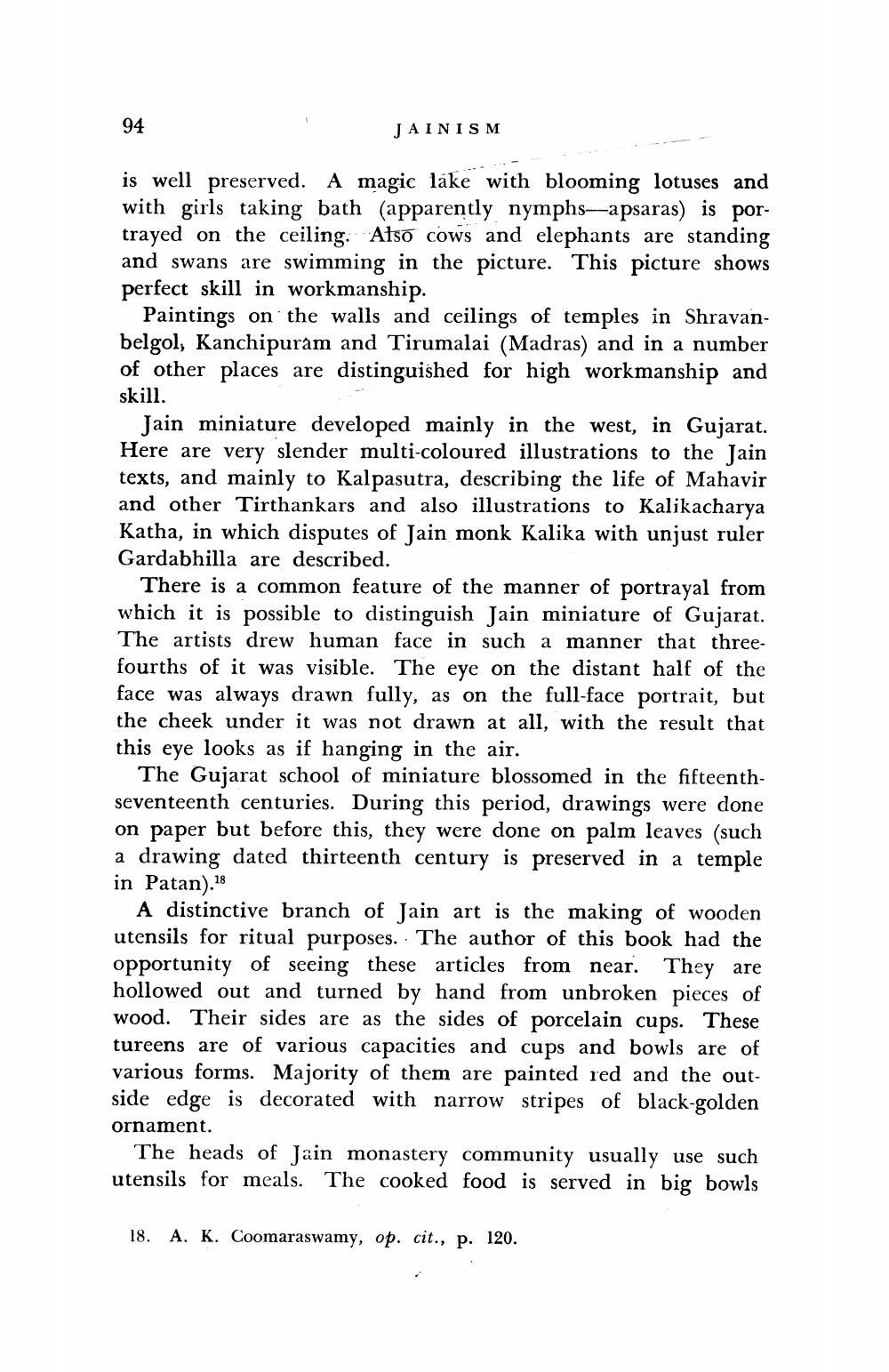________________
94
JAINISM
is well preserved. A magic lake with blooming lotuses and with girls taking bath (apparently nymphs--apsaras) is portrayed on the ceiling. Also cows and elephants are standing and swans are swimming in the picture. This picture shows perfect skill in workmanship.
Paintings on the walls and ceilings of temples in Shravanbelgol, Kanchipuram and Tirumalai (Madras) and in a number of other places are distinguished for high workmanship and skill.
Jain miniature developed mainly in the west, in Gujarat. Here are very slender multi-coloured illustrations to the Jain texts, and mainly to Kalpasutra, describing the life of Mahavir and other Tirthankars and also illustrations to Kalikacharya Katha, in which disputes of Jain monk Kalika with unjust ruler Gardabhilla are described.
There is a common feature of the manner of portrayal from which it is possible to distinguish Jain miniature of Gujarat. The artists drew human face in such a manner that threefourths of it was visible. The eye on the distant half of the face was always drawn fully, as on the full-face portrait, but the cheek under it was not drawn at all, with the result that this eye looks as if hanging in the air.
The Gujarat school of miniature blossomed in the fifteenthseventeenth centuries. During this period, drawings were done on paper but before this, they were done on palm leaves (such a drawing dated thirteenth century is preserved in a temple in Patan).18
A distinctive branch of Jain art is the making of wooden utensils for ritual purposes. The author of this book had the opportunity of seeing these articles from near. They are hollowed out and turned by hand from unbroken pieces of wood. Their sides are as the sides of porcelain cups. These tureens are of various capacities and cups and bowls are of various forms. Majority of them are painted red and the outside edge is decorated with narrow stripes of black-golden ornament.
The heads of Jain monastery community usually use such utensils for meals. The cooked food is served in big bowls
18. A. K. Coomaraswamy, op. cit., p. 120.




